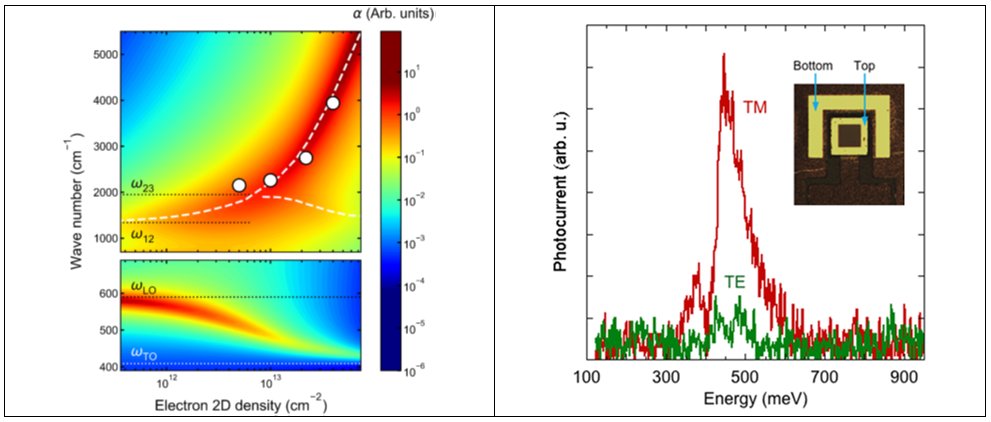Materials for optoelectronics IR and THz
Currently, components that emit and detect in very long wavelengths (30-300μm, or 1 to 10 THz-THz- range) are limited in terms of performance and operating temperature. Broad bandgap materials such as ZnO or GaN have particular properties offering tremendous unexplored potential to lift this technology lock.
A condition to achieve this goal is to master the growth of these materials without any crystalline defects. For example, on ZnO, we use massive substrates and a new growth reactor (MBE). For GaN, so-called 'semi-polar' orientations are developed within the laboratory.
Through these objectives of optoelectronic components, more fundamental approaches are approached in the field of infra-red and THz: plasmons, inter-subband polarons, inter-subband excitons physics, metamaterials, etc ...
More information and associated partners: European project FET-Open ZOTERAC (coordination: Jean-Michel Chauveau), ANR OPTOTERAGAN (Coordination: Yvon Cordier).
Recent realizations:
- Homoepitaxy of non-polar ZnO/(Zn, Mg) O multi-quantum wells: From a precise growth control to the observation of intersubband transitions, N Le Biavan et al. Applied Physics Letters 111 (23), 231903 (2017)
- Multisubband Plasmons in Doped Quantum Wells, MM Bajo, et al., Physical Review Applied 10 (2), 024005 (2018) –figure 1 left-
- Short infrared wavelength quantum cascade detectors based on m-plane ZnO/ZnMgO quantum wells, A. Jollivet et al, in press (2018) –figure 1 right-



